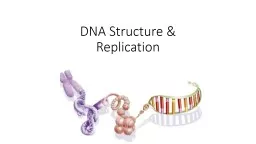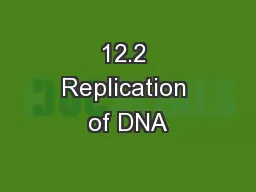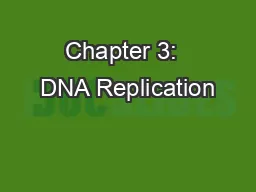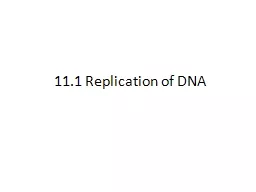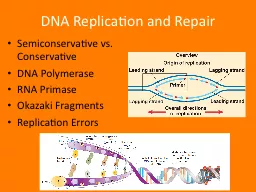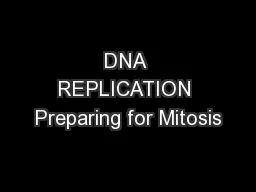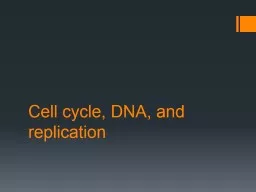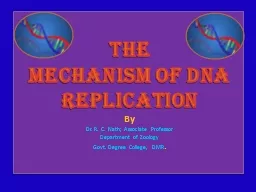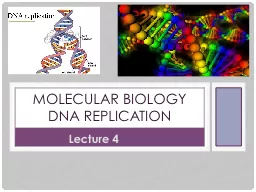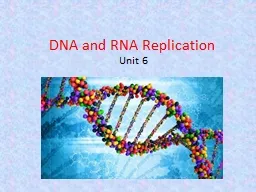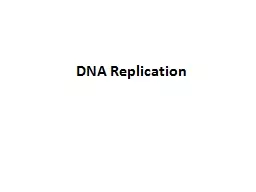PPT-DNA Structure & Replication
Author : tatiana-dople | Published Date : 2016-09-06
DNA Structure The discovery of the structure Francis Crick and James Watson The deoxyribonucleic acid DNA molecule is the genetic blueprint for each cell and ultimately
Presentation Embed Code
Download Presentation
Download Presentation The PPT/PDF document "DNA Structure & Replication" is the property of its rightful owner. Permission is granted to download and print the materials on this website for personal, non-commercial use only, and to display it on your personal computer provided you do not modify the materials and that you retain all copyright notices contained in the materials. By downloading content from our website, you accept the terms of this agreement.
DNA Structure & Replication: Transcript
Download Rules Of Document
"DNA Structure & Replication"The content belongs to its owner. You may download and print it for personal use, without modification, and keep all copyright notices. By downloading, you agree to these terms.
Related Documents

